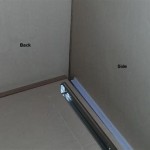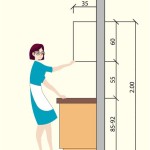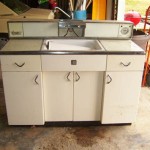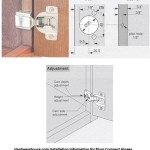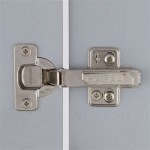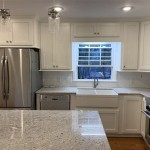Can You Use Drywall Anchors To Hang Kitchen Cabinets?
Kitchen cabinets, laden with dishes, cookware, and pantry staples, exert significant weight on the wall. This raises an important question during installation: are drywall anchors sufficient for supporting these heavy fixtures, or are more robust solutions required? The answer is nuanced and depends on several factors, primarily the type of anchor, cabinet weight, and wall construction.
Key Considerations When Using Drywall Anchors for Kitchen Cabinets
Several factors play a crucial role in determining the appropriateness of drywall anchors for hanging kitchen cabinets. Understanding these factors is essential for making safe and effective installation choices.
- Cabinet Weight: The combined weight of the cabinet and its contents is the primary determinant. Lightweight cabinets might be suitable for some anchors, while heavier cabinets invariably require more substantial support.
- Anchor Type: Various drywall anchors offer different weight capacities and holding power. Choosing the right anchor type for the specific application is critical.
- Wall Construction: Drywall thickness and the presence of studs significantly impact the efficacy of anchors.
Types of Drywall Anchors and Their Suitability
The market offers a range of drywall anchors, each designed for specific applications and weight limits. Here's a breakdown of common types and their relevance to cabinet installation:
- Plastic Expansion Anchors: These are suitable for light-duty applications and are generally insufficient for supporting the weight of kitchen cabinets.
- Threaded Drywall Anchors (Self-Drilling): Offering slightly better holding power than plastic anchors, these are still inadequate for most kitchen cabinets except perhaps very small, lightweight ones.
- Toggle Bolts: These offer substantially greater holding power than plastic or threaded anchors and can be suitable for medium-weight cabinets in sturdy drywall. However, their reliability can be compromised in thinner drywall.
- Molly Bolts: Similar to toggle bolts, molly bolts provide a strong hold and are a viable option for medium-weight cabinets. They require a slightly larger hole and may be more challenging to install.
The Importance of Wall Studs
Whenever possible, attaching cabinets directly to wall studs is the preferred method. Studs provide the most secure anchoring point, capable of supporting the substantial weight of fully loaded cabinets. Locating and utilizing studs eliminates the reliance on anchors altogether.
Understanding Drywall Thickness
Drywall thickness is another critical factor. Standard drywall is typically ½ inch thick, while thicker options, like ⅝ inch, offer greater support. Thicker drywall can enhance the holding power of anchors, but it's still essential to select the appropriate anchor type for the anticipated weight.
Weight Distribution and Multiple Anchors
Distributing the weight across multiple anchors can improve the overall holding capacity. Even with sturdy anchors, using multiple attachment points helps prevent stress concentration and ensures a more secure installation. This is particularly important for larger, heavier cabinets.
Risks of Using Drywall Anchors for Heavy Cabinets
Relying solely on drywall anchors, even heavy-duty ones, for substantial cabinets carries inherent risks. Over time, the weight can cause the anchors to loosen or pull out of the drywall, leading to cabinet instability and potential damage.
- Cabinet Failure: The cabinet may detach from the wall, posing a significant safety hazard.
- Wall Damage: The anchors can tear out large sections of drywall, requiring extensive repairs.
- Injury: Falling cabinets can cause serious injury to anyone in the vicinity.
Alternatives to Drywall Anchors for Cabinets
For heavier cabinets, alternatives to drywall anchors offer greater security and stability. These methods ensure a more robust and long-lasting installation, minimizing the risk of cabinet failure.
- Direct Mounting to Studs: As mentioned, this is the most reliable method and should be prioritized whenever possible.
- Reinforcing the Wall: Adding additional backing, such as plywood, behind the drywall provides a stronger anchoring surface. This is particularly useful in situations where studs are not readily accessible.
- Using a French Cleat: This method involves attaching a wooden cleat to the wall studs and a corresponding cleat to the back of the cabinet. The two cleats interlock, providing a strong and secure hanging mechanism.
Assessing Your Specific Situation
Each cabinet installation is unique. Factors like cabinet size, weight, wall construction, and contents all influence the best approach. Carefully assess these factors before deciding whether drywall anchors are appropriate or if a more robust solution is required.

How To Hang A Cabinet On One Stud With Drywall Anchors That Homeschool Gal

Install Wall Cabinets Without Studs Theplywood Com

Everything You Need To Know About Drywall Anchors

Install Wall Cabinets Without Studs Theplywood Com

Might Not Be Easy To Get The Hang Of Installing Cabinets
What Is The Best Way To Install Wall Cabinets Dry Quora

Best Fasteners For Installing Cabinets

How To Install Wall Cabinets Without Studs Upgradedhome Com

How To Install Kitchen Cabinets Diy Family Handyman

Best Drywall Anchors For Mounting Tvs And Other Heavy Items Ptr
Related Posts

